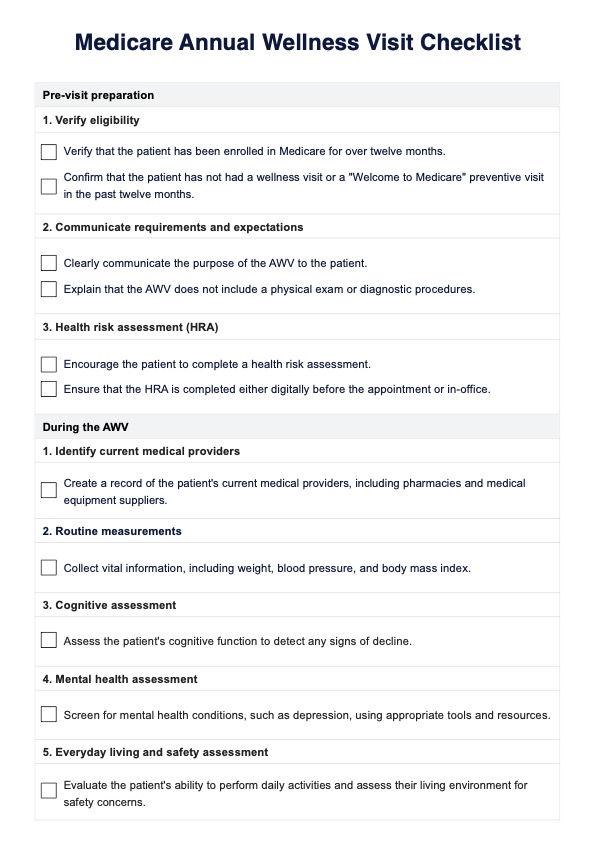For a Medicare annual wellness visit (AWV), the required documentation includes details on the patient’s medical and family history, current medications, and a list of healthcare providers involved in their care. During the AWV, providers gather vital measurements like height, weight, and blood pressure and conduct a comprehensive health risk assessment. This assessment helps identify any health risks that Medicare patients may face and supports the creation of a personalized prevention plan. The documentation must also cover preventive counseling services and health education focused on the patient’s specific needs, ensuring Medicare beneficiaries receive tailored preventive visit care.

Medicare Annual Wellness Visit
Are you conducting a Medicare Annual Wellness Visit? Enhance the efficiency of this consultation with this Medicare Annual Wellness Visit Checklist.
Medicare Annual Wellness Visit Template
Commonly asked questions
As part of the Medicare wellness exam, Medicare patients often undergo a brief cognitive test, which includes recalling three unrelated words. This memory test assesses short-term recall and is an essential part of evaluating cognitive function. Asking patients to remember and repeat three words during the exam helps identify any early signs of cognitive decline. This simple approach enables healthcare providers to address memory issues in a proactive manner, and it complements the broader cognitive and psychological assessments conducted during Medicare annual wellness visits.
The checklist for an annual wellness visit involves gathering and updating key patient information, such as health history, medications, and a record of healthcare providers. This initial preventive physical examination includes screening for depression and assessing cognitive health, followed by vital measurements like blood pressure, BMI, and vision checks. The visit also includes developing a personalized preventive counseling plan and providing health education on relevant topics. These elements ensure that Medicare patients receive a thorough initial preventive physical exam aimed at promoting well-being and addressing potential health issues early on.
EHR and practice management software
Get started for free
*No credit card required
Free
$0/usd
Unlimited clients
Telehealth
1GB of storage
Client portal text
Automated billing and online payments











